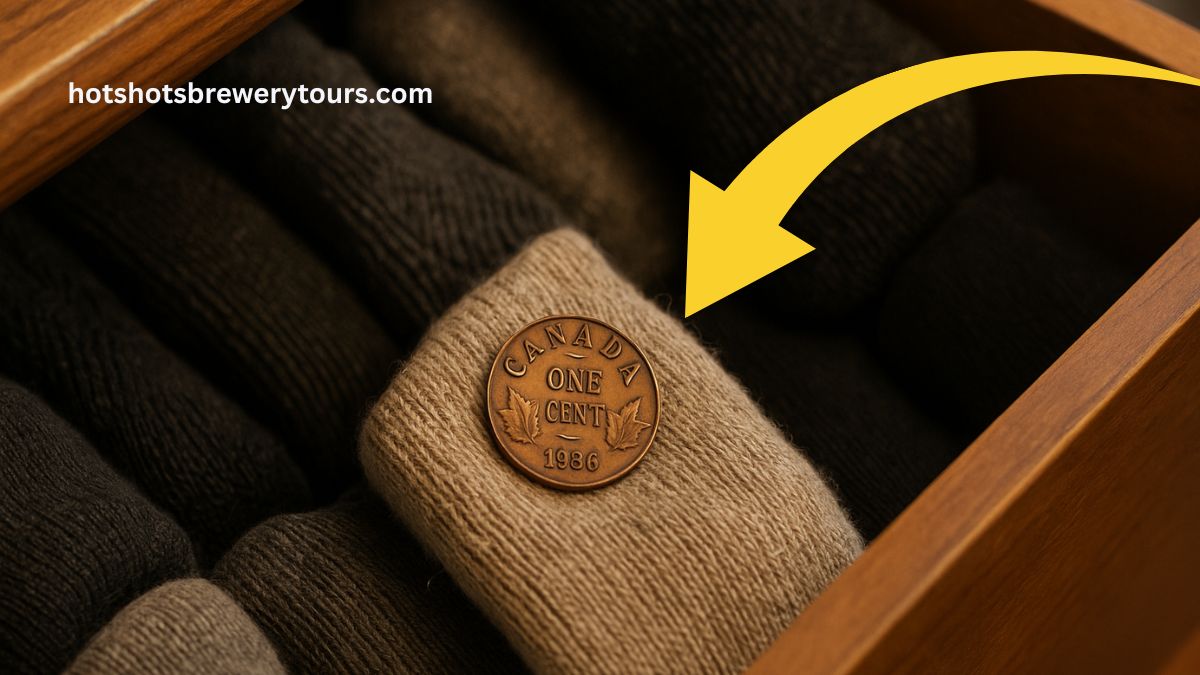Finding treasure hidden in everyday places isn’t just the stuff of legends—it happens in real life too. In a recent extraordinary discovery, a rare Canadian coin that had been stashed away in a sock drawer for decades sold at auction for an impressive $25,000.
This stunning find has reignited excitement among collectors and everyday Canadians alike, highlighting the hidden value that some old coins may hold.
The Story Behind the Sock Drawer Treasure
A resident of Ontario, Canada, stumbled upon the coin while cleaning out a family home. The coin, tucked inside an old sock and forgotten for years, turned out to be a 1936 Dot Penny, one of the rarest and most sought-after coins in Canadian history.
Experts quickly authenticated the find, and it later achieved a remarkable sale price of $25,000 at a prestigious numismatic auction.
What Makes the 1936 Dot Penny So Valuable?
The 1936 Dot Penny holds historical significance in Canadian minting. During the abdication of King Edward VIII, the Royal Canadian Mint prepared coins for 1937, but due to delays, they issued some 1936 coins with a tiny dot below the date to signify the transitional period.
Only a handful of these pennies exist today, making them incredibly rare.
Key Features of the 1936 Dot Penny:
- Date: 1936 with a small dot beneath
- Design: King George V effigy on the obverse
- Material: 95.5% copper, 3% tin, 1.5% zinc
- Minting: Extremely limited mintage
- Estimated surviving examples: Fewer than 5 known in top condition
Quick Facts About the 1936 Dot Penny
| Feature | Details |
|---|---|
| Year Minted | 1936 |
| Unique Mark | Small dot beneath the date |
| Metal Composition | Copper (95.5%), Tin (3%), Zinc (1.5%) |
| Original Mintage | Extremely low (handful of pieces) |
| Auction Sale Price (2025) | $25,000 |
| Known Surviving Specimens | Less than 5 in high-grade condition |
Why Are Rare Canadian Coins Gaining Value?
Several factors contribute to the rising value of rare Canadian coins:
- Scarcity: Limited surviving examples drive collector demand.
- Historical Importance: Coins from significant periods like royal transitions are particularly prized.
- Condition: Well-preserved coins, free from heavy wear and damage, command higher prices.
- Market Trends: The global interest in numismatics has surged, driving auction prices higher.
Coins that were once mere pocket change can now represent serious investments, especially those associated with unique minting errors or transitional periods.
How to Identify a Valuable Coin at Home
If you have a collection of old Canadian coins, here’s how you might spot a valuable piece:
- Check the Date and Mintmark: Rare coins often come from specific years with unusual markings.
- Condition Assessment: Higher-grade coins fetch more at auctions.
- Look for Errors: Misprints, double strikes, and transitional designs add significant value.
- Consult an Expert: Professional grading can dramatically increase a coin’s market value.
A casual check of your change jars, drawers, or old family storage could uncover hidden treasures worth thousands!
The story of a $25,000 Canadian coin found hidden in a sock drawer is a thrilling reminder that valuable treasures might be closer than you think.
Rare coins like the 1936 Dot Penny not only hold historic importance but can offer life-changing financial surprises.
Whether you’re a seasoned collector or a curious beginner, now might be the perfect time to sift through those old drawers—you never know what forgotten fortune you might find!
FAQs
What should I do if I find an old coin like this?
Consult a professional numismatist or send it to a coin grading service to get an expert evaluation and certification.
How much is a regular 1936 Canadian penny worth?
A standard 1936 penny without the dot is worth much less, typically ranging from a few dollars up to a few hundred based on condition.
Are other Canadian coins valuable too?
Yes! Coins like the 1921 5-cent silver coin or the 1948 silver dollar are also highly prized among collectors.

